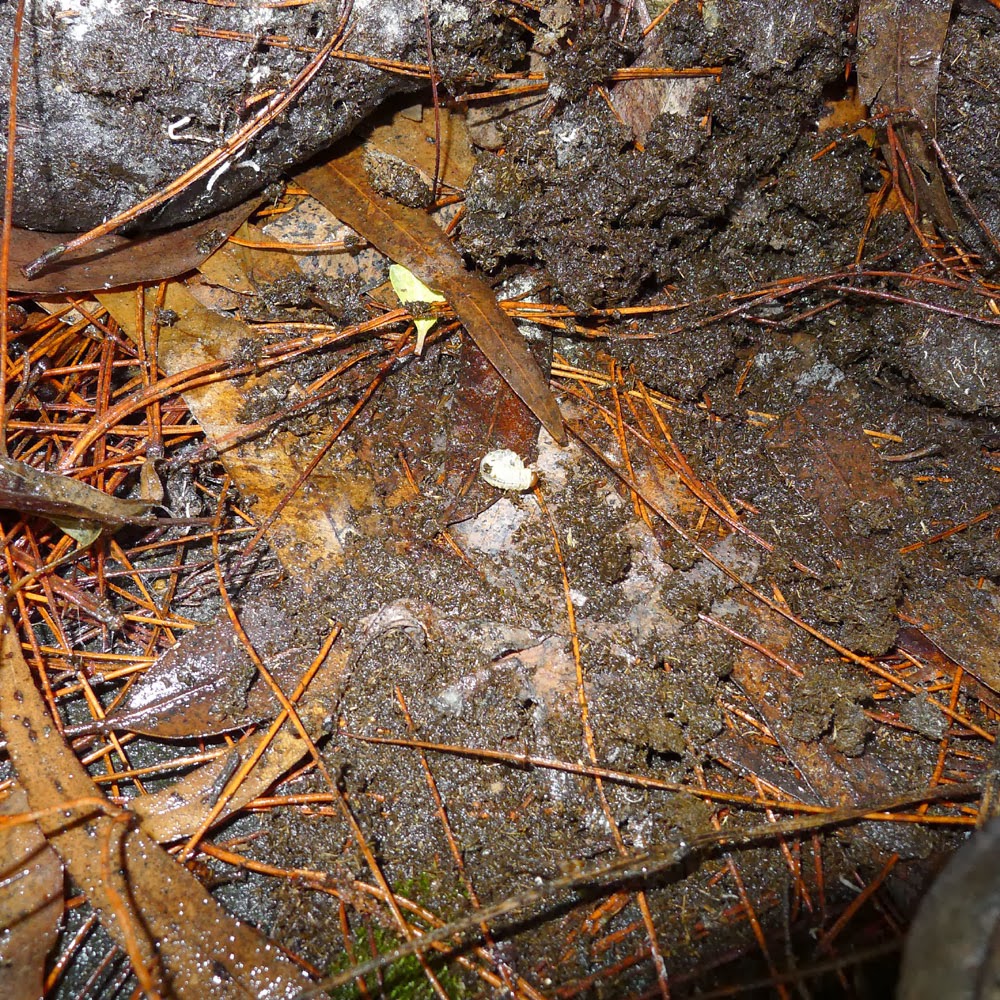My first dung beetles collecting in Tam Dao National Park
The idea to do a first collecting trip this year (2014) gave by a Czech Collector of beetles. The weather now still cold with some rain of the spring. I never have done any field trip in this season and it sound crazy because of no flying insects this time.
Miguel suggested to do a dung finding trip and he promised that we can see some scarab beetles as scarabaeinae or geotrupidae.
Tam Dao forest in rainy day
Well, I can't wait for more than a month and we agreed to arrange a trip to Tam Dao to see what is happening in this season. And it is not bad idea if some one invite you something difference, this case is "shit party", what ever it be called, we will try it at least one time. We arrived at the bottom of Tam Dao mountain in middle of the day, a cloudy and rainy day, everything wet and never same to any insect collecting day I tried before. It was cold enough to keep all the insects not flying on the way we go up, and we need to find a "good" dung of cow. A "good dung" is understood as a dung with 2 days old, it must not too fresh but not too old.
The first dung be found near the main road, up to the town of Tam Dao, at middle of the drain, showed by Quang Thai, a Lucanid researcher, this is also the first "dung" trip for him. His face look quite happy as be first person who found the object, Miguel looked at the "dung" near Thai's position and said that "it is too fresh". Well, in a rainy day, I wonder how he can know which is a fresh or not fresh shit of a cow, what ever I believed him and maybe it was not only one cow dung in Tam Dao, of course I also don't want check that kind of thing if Miguel be true, "fresh dung", it is not "fresh air" or "fresh water", not really good feeling.
We continued the trip and again, Thai informed us about another shit, it be on the ground this time, the dung was decorated with some plantations and fugues.
The second dung before the operation with nature shape
Because due to the time, dung to be so rare and we decided to check the content of the new discovery, the dung look maybe too old because the color changed and grass and fugues already appear around. Indeed, no mature form of beetle be found, they already done the eggs laying and one of them had hatched with evidence of one larva in side.
The second finding with a single larva in the middle of "too old dung"
Then finally we found a very very good place with about 20 dungs around, and because the large number, the possibility of "good dung" to be very high. At the first searching, of of horned scarab beetle be found between the layer of feces and ground. All the people be happy very much with the cow's product, the beetles just come for their next generations. I read about dung beetles collecting but not the thing that I done today, not too fresh but still smelling and the felling is not same to my feeling in the past as collecting insects.
Dragonflies found very colorful and fresh, shinning in the clean water areas; light trap is hard work but no smelling, fruit trap for butterflies and centoniinae is not easy for breathing but it much more better than cow shit.
One of the first discovery, and very "fresh" also! Copris sinicus identified by Denis Keith
I also tried with one of them but this is not really easy work
Sometime for this kind of small beetle, you need to dig a whole shit
 But 2 hours working is not really hard if the result be showed (only one serious worker, Miguel).
But 2 hours working is not really hard if the result be showed (only one serious worker, Miguel).
 Some of them quite special, as this horned beetle, it look not like its smell after cleaning...
Liatongus vertagus identified by Denis Keith
Some of them quite special, as this horned beetle, it look not like its smell after cleaning...
Liatongus vertagus identified by Denis Keith
A Geotrupidae
And two yellow spots beetles (I wonder what the color spots for if they just in side of the dung)
Not only scarab beetles, a staphylinidae also be found, maybe special one
It was a really not bad result in a cloudy and rainy cold day, though you still can see some Erycaceae or Theaceae flowers:
Small bug in side of Erycaceae in Tam Dao
A red theaceae, very attractive food of horn rutelinae (Fruhstorferia anthraciana)
So the dung beetles are still good looking without the fact that they live and eat bad smelling things; without them, maybe this world is just a big shit.
And before to shake a hand of entomotlogist just come back from the field, don't forget asking him what insect group that he is studying, be careful with some coleopterists, just say Hello some time is more than enough....



























